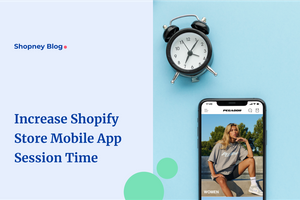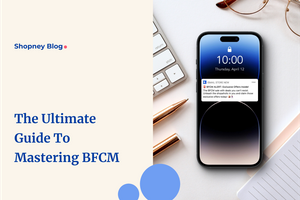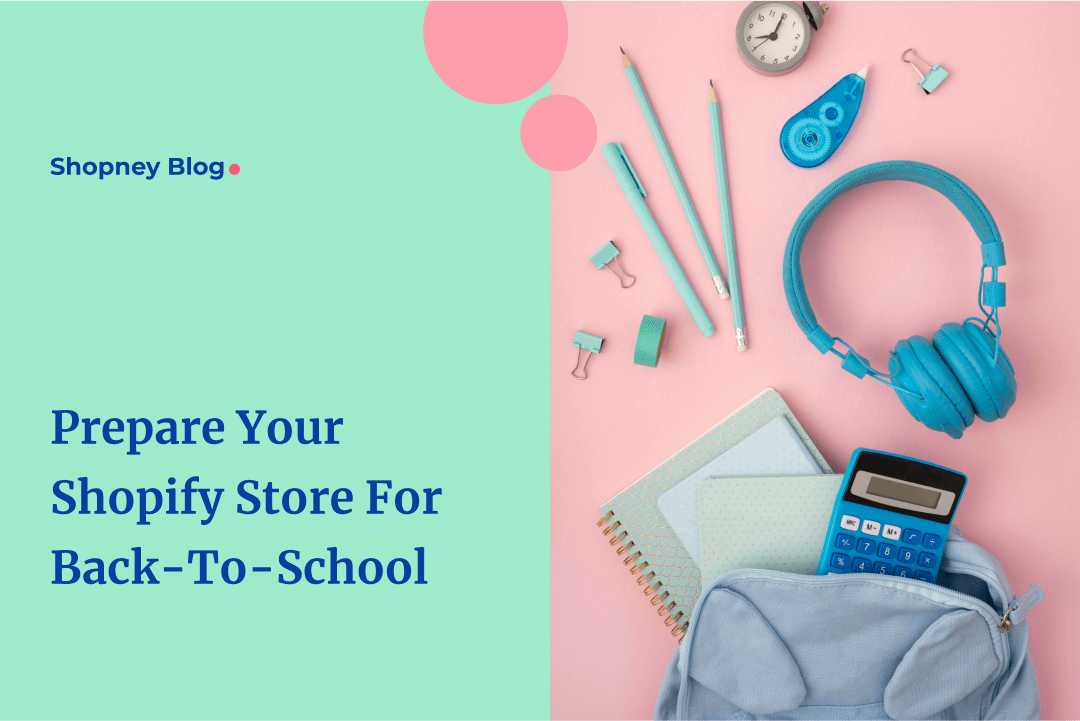
Prepare your Shopify store for back-to-school: Key strategies for 2024

The second-largest shopping period of the year, back-to-school season, is projected to grow 3.2% to reach $81.16 billion in the US this year.
It’s obvious that back-to-school presents an excellent opportunity for Shopify stores. However, it can be challenging, given the competition among nearly 4.5 million Shopify brands worldwide. This increasing competition requires you to build new strategies to make your brand stand out.
In this blog post, we'll cover everything you need to know, from understanding this season's market trends to customer expectations to actionable insights for success.
Let’s dive in!
What is back-to-school?

Back-to-school is a peak season for many Shopify stores. This period is not just about school supplies; it's a time when many shoppers are looking for deals after summer vacations, making it a prime season for Shopify stores that attract different target customers. From fashion retailers offering new wardrobe essentials to tech stores providing the latest gadgets, to even niche shops with unique school supplies to many more.
When does back-to-school shopping start?

This season typically starts in late July when first-time shoppers come in and extends through early September with the last-minute shoppers. The peak shopping period generally occurs in August, approximately 90% of shoppers start filling their carts in August. During this time, target customers actively seek out deals, even before the season starts, on everything they are interested in.
Understand the back-to-school market
In 2023, back-to-school sales saw a remarkable increase, with Americans spent a total of $135.5 billion for back-to-school and back-to-school shopping in 2023.
One of the best ways to get prepared is to get insights from last year so that you can understand what worked and what didn’t.
Insights from last year: What worked and what didn't
Here are strategies that worked in 2023:
- Exclusive online discounts: Brands that offered time-limited deals resulted in increased traffic and higher conversion rates. These discounts not only enticed first-time buyers but also encouraged repeat purchases, as customers felt they were getting significant value for their money.
- User-friendly mobile apps: Mobile commerce sales reached $2.2 trillion in 2023 and now make up 60% of all eCommerce sales around the world. This is what made brands that have mobile apps stand out. These apps offered seamless browsing, quick checkout processes, and mobile-exclusive deals. Features like wish lists, push notifications, and mobile payment options enhanced convenience and encouraged more frequent purchases.
- Personalized shopping experience: Brands that offered product recommendations based on customer data observed higher customer satisfaction and loyalty. Personalized emails, targeted ads, and product suggestions created a more engaging shopping experience, enhancing the customer journey.
Despite these successes, some retailers faced major challenges during the back-to-school season.
- Inventory management issues: Brands that failed to accurately forecast demand struggled with stockouts and overstock situations. Stockouts led to missed sales opportunities and frustrated customers, while overstock resulted in increased storage costs and the need for discounting excess inventory.
- Shipping delays: With high expectations for quick and reliable delivery, any delays negatively impacted the customer experience. Brands that didn’t have robust logistics in place faced numerous complaints, returns, and a loss in customer loyalty.
Target your customers effectively
To maximize your impact during the back-to-school season, it's crucial to target the right audience: parents, students, and educators. Each group has distinct needs and preferences, and your strategy should reflect these differences to be truly effective.
Parents are looking for convenience and value. They want to find everything their children need in one place, with options that make the shopping process easier. Offering bundle deals, streamlined checkout processes, and fast shipping options can meet their needs and make your store their go-to choice.
Students are drawn to trendy products and the latest tech gadgets. They are excited about exclusive back-to-school promotions that highlight fashionable items and innovative technology. Capturing their interest requires showcasing the latest trends and offering deals that appeal to their sense of style and need for functionality.
Educators prioritize the quality, durability, and practicality of products. They need items that meet the demands of the school environment and help them in their teaching roles. Emphasizing the superior quality and utility of your products will attract them.
Office workers are also on the lookout for new supplies and equipment as they actively look up for a productive season. Highlighting high-quality stationery, ergonomic office furniture, and tech tools for their needs can be essential.
Health and wellness enthusiasts see back-to-school as a time to reset and refocus. Promoting sporting clothes, healthy snacks, and self-care products can appeal to those looking to start the season with a fresh, healthy approach.
Home decor enthusiasts often take this time to redecorate their living spaces, making it an ideal season for stores selling home organization, decor, and furniture. Offering stylish and functional products can attract customers looking to create an inspiring environment for studying or working from home.
To run a successful back-to-school campaign, it's important to recognize the unique needs of your target customers. By tailoring your strategy to meet these needs—offering value and convenience to parents, trendy and tech-savvy options to students, and high-quality, practical products to educators—you can create a compelling shopping experience that drives engagement and boosts sales.
Challenges Shopify stores face during the back-to-school season
- Increasing competition and crowded marketplaces: With nearly 4.5 million Shopify brands competing for attention, the marketplace becomes exceedingly crowded during the back-to-school season. This increased competition makes it challenging for individual stores to stand out and attract customers. Crafting unique selling propositions and innovative marketing strategies is crucial to differentiate your store from the rest.
- Managing promotional campaigns: During the back-to-school season, every retailer offers promotional campaigns. However, balancing multiple campaigns across different channels can be challenging. Ensuring consistency in messaging, timing promotions effectively, and tracking the performance of each campaign requires planning and execution.
- Handling increased customer service inquiries: With the increase in traffic and sales, customer service inquiries also increase. Shopify stores need to be prepared to handle increased volumes of questions, complaints, and requests. Implementing chatbots can help manage these inquiries.
- Meeting the expectations of tech-savvy shoppers: Today's shoppers are tech-savvy and have high expectations for their online shopping experiences. They demand easy-to-navigate websites, mobile-friendly interfaces, and personalized shopping experiences. Failing to meet these expectations can result in lost sales and diminished customer loyalty. Investing in technology to enhance your website's user experience, offering personalized recommendations, and ensuring a seamless mobile shopping experience are all crucial steps to meet these demands.
Examples of successful back-to-school marketing campaigns
Staples
Staples, an American office supply company, is one of the good examples of a well-executed back-to-school campaign.
With a focus on value-conscious parents, Staples has crafted a campaign that evokes nostalgia by rolling back prices to 90s levels. This approach includes a variety of discounts, bundles, and sales, making it a cost-effective solution for back-to-school shopping.
Additionally, Staples has partnered with influencers to boost the campaign's reach and engagement. They have also developed checklists, simplifying the shopping experience by ensuring parents can easily find all the necessary supplies in one convenient location.
Marks & Spencer
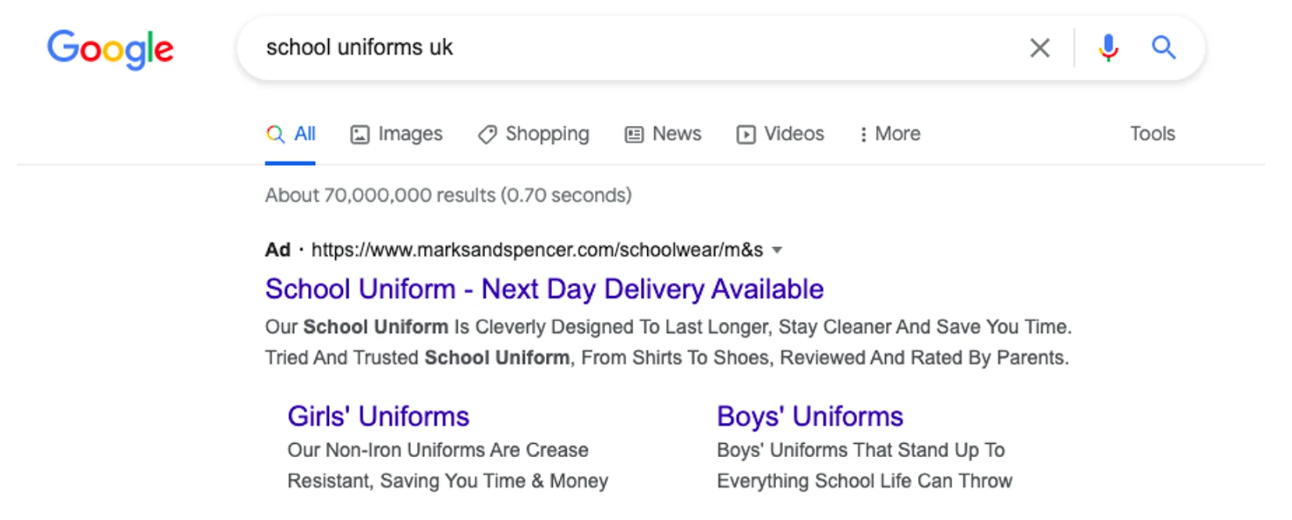
Marks & Spencer, a leading retailer, has targeted budget-conscious consumers. They have achieved this by offering better-value products across their food, home, and clothing ranges. Shoppers are increasingly seeking out the most affordable options before making their purchases.
Blume
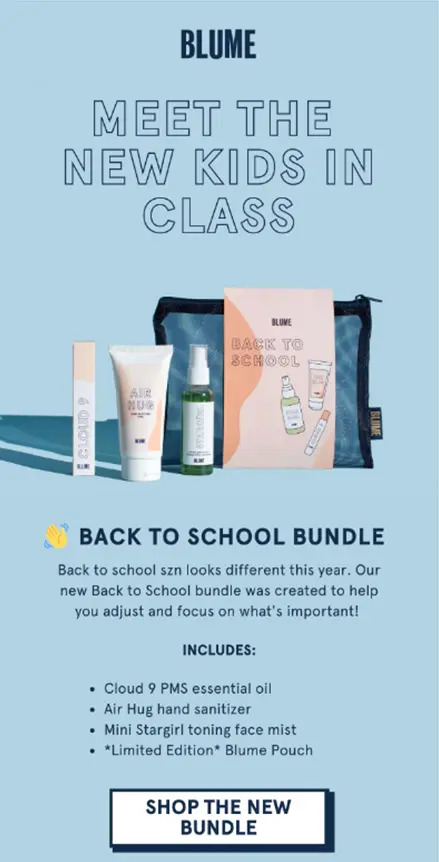
Blume, a skincare brand, has adapted its offerings to meet the demands of the back-to-school season.
Their innovative back-to-school bundle includes sanitizers and essential hygiene products tailored for students, ensuring they are well-equipped for the classroom.
Blume's approach shows that no matter the industry, there are always ways to align your products with the seasonal needs of consumers.
Strategies to maximize sales and conversions
- Leverage personalized campaigns: 71% of consumers expect personalization, and if they don’t get it, 76% switch to a competitor. Personalization is no longer nice to have, it’s a must-have for eCommerce brands. To provide enhanced personalization, analyze customer data to tailor personalized push notifications, targeted ads, and customized product suggestions.
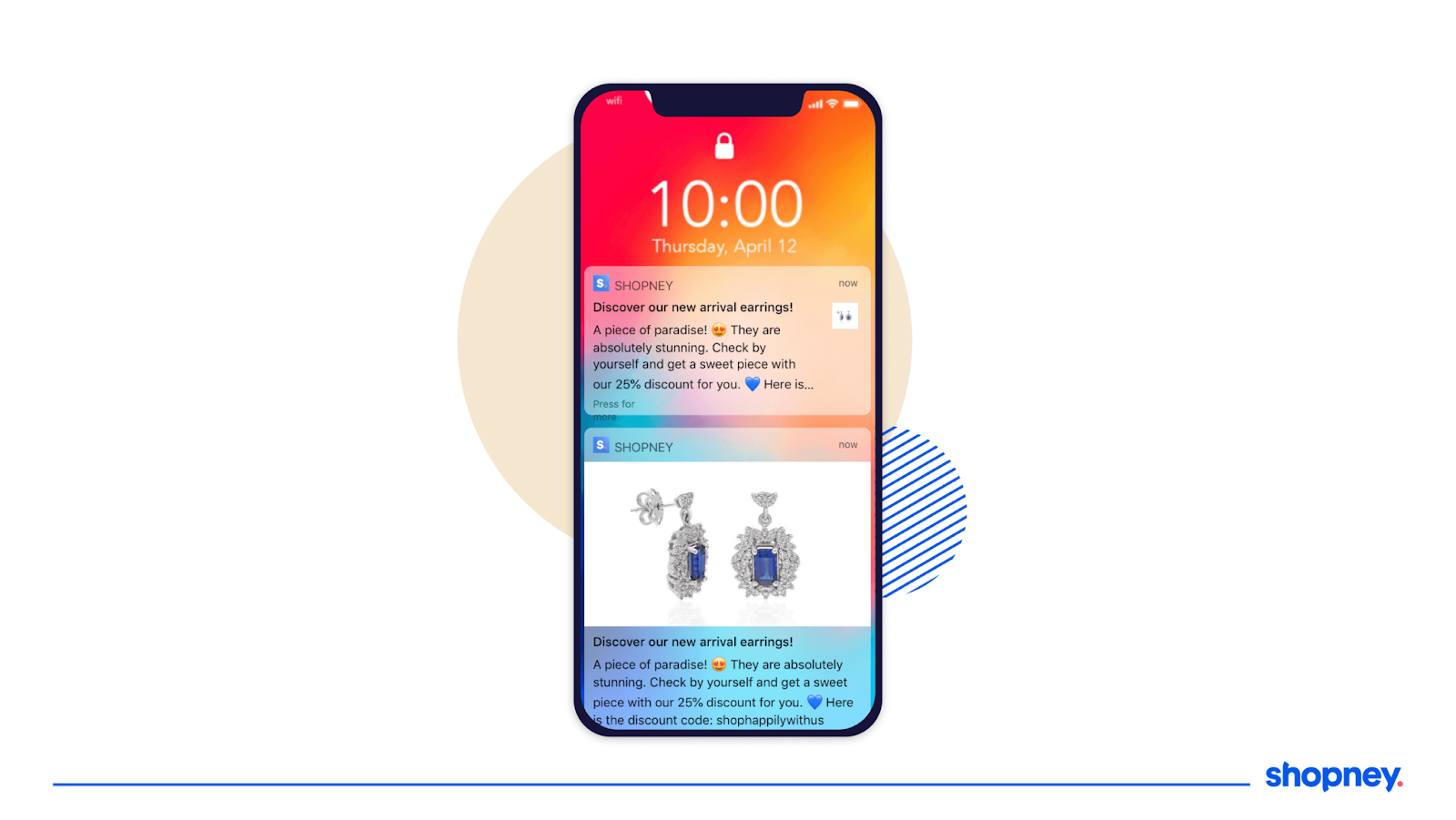
Create exclusive back-to-school deals: 88% of shoppers are willing to spend more to qualify for free shipping and 59% only shop at retailers offering free returns.
Offering special promotions and discounts through your app can entice customers to choose your store over competitors. Develop time-limited offers, bundle deals, and exclusive discounts for app users.

- Highlight engaging content: Creating engaging content such as back-to-school guides, tips, and how-to articles within your app can provide added value to your customers. This content can help shoppers make informed decisions and enhance their shopping experience. Additionally, interactive content like quizzes or product finders can increase user engagement and time spent on your store.
- Get feedback and collect reviews: Providing customer reviews to build trust and credibility is essential. Encourage satisfied customers to leave positive reviews and showcase these testimonials on your product pages and social media.
- Use social media effectively: Social media platforms are powerful tools for reaching a wider audience. Run targeted ads on platforms like Instagram, Facebook, and TikTok to promote your back-to-school deals. You can also collaborate with influencers who resonate with your target audience to increase brand visibility and credibility.
- Optimize checkout process: Ensure that your checkout process is smooth and user-friendly. Minimize the steps required to complete a purchase, offer multiple payment options, and provide clear information about shipping and returns. Using a mobile app can make the checkout page faster and more efficient. By simplifying the checkout experience and making it more intuitive, you can reduce the cart abandonment rate and drive higher sales.
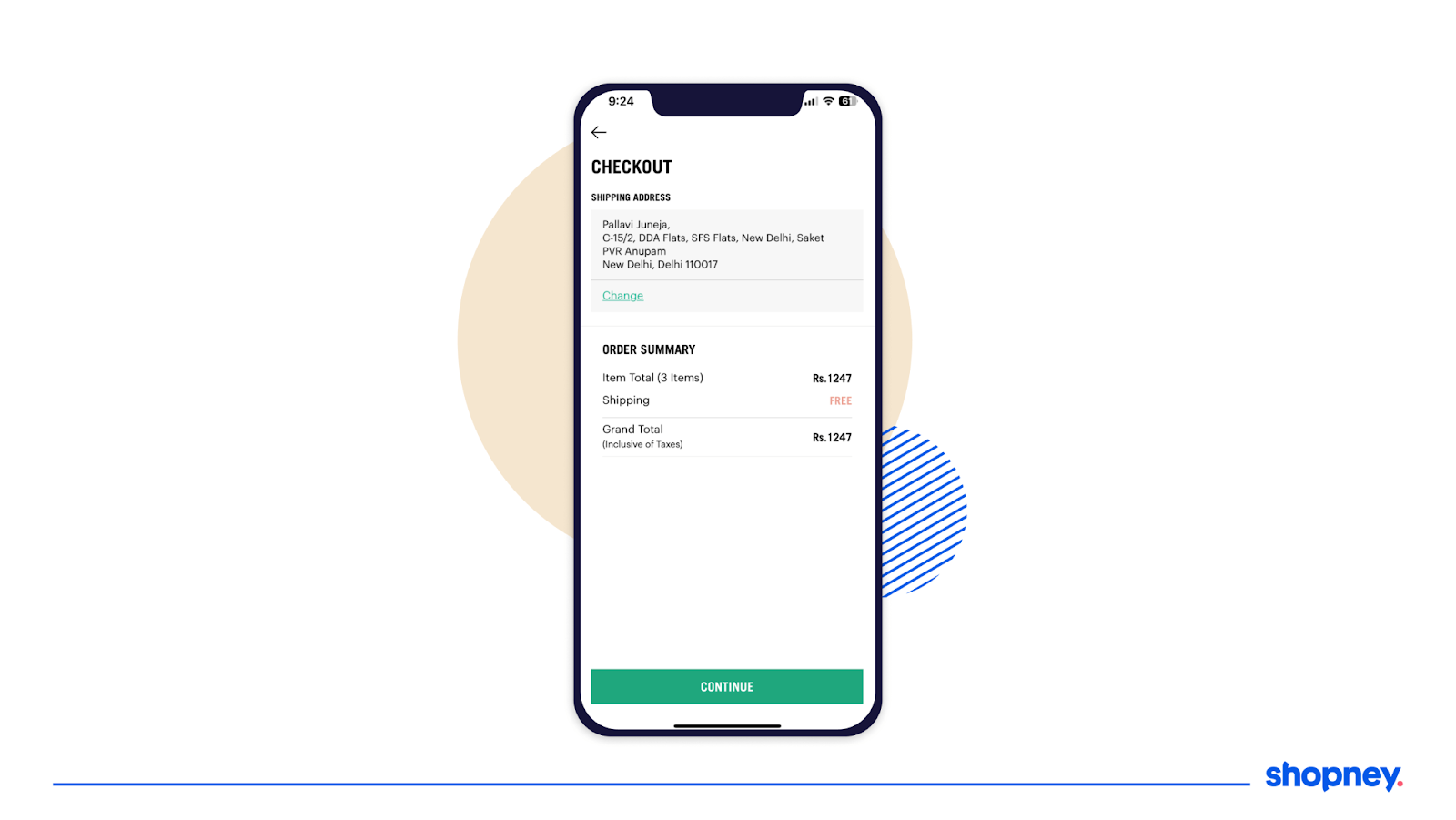
- Win customers with loyalty programs: Implementing a loyalty program can incentivize repeat purchases and increase customer retention. Reward customers after every purchase, offer special discounts for loyal customers, and exclusive early access to sales. Loyalty programs can create a sense of community and encourage customers to return to your store.
- Leverage mobile app: Investing in a user-friendly mobile app is crucial for capturing the attention of tech-savvy shoppers. A well-designed app can provide a seamless shopping experience with easy navigation, quick checkout processes, and mobile-exclusive deals. Features like wish lists, push notifications, and mobile payment options can enhance convenience and drive more frequent purchases.
Why mobile apps are essential for back-to-school sales?
Here are the four main reasons why mobile apps are essential for your store:
- Engage with customers: Push notifications are a powerful tool for keeping your customers informed and engaged. With a mobile app, you can effectively use push notifications to promote back-to-school offers, special discounts, and important updates. These timely and targeted messages can drive traffic to your app, encourage immediate purchases, and keep your brand top-of-mind for your customers.
“Shopney provided us with a super simple way to increase our revenue and retain customers: push notifications. It diversify your marketing and is more effective than email marketing!”
-CMO at Pedagor
2. Owned marketing and sales channel: A mobile app serves as an owned marketing channel, giving you the power to send push notifications directly to your customers. This direct communication line allows you to engage customers instantly with personalized messages, exclusive offers, and updates. By building a stronger connection, you not only enhance customer loyalty but also improve customer retention, all without relying on third-party platforms.
3. Higher mobile conversions and reduced ad spend: Conversion rates for apps are 3X higher than mobile-optimized websites. With streamlined navigation, faster checkout processes, and personalized shopping experiences, customers are more likely to complete purchases through an app, boosting overall sales. Mobile apps allow for direct communication via push notifications, reducing the need for expensive ad campaigns while driving significant engagement and sales.
4. Enhance customer support: Mobile apps with in-app chat features provide a direct line of communication between you and your customers. This allows for real-time assistance, quick resolution of queries, and a more personalized customer service experience. Additionally, you can provide personalized product suggestions through in-app chat improving customer experience and higher sales.
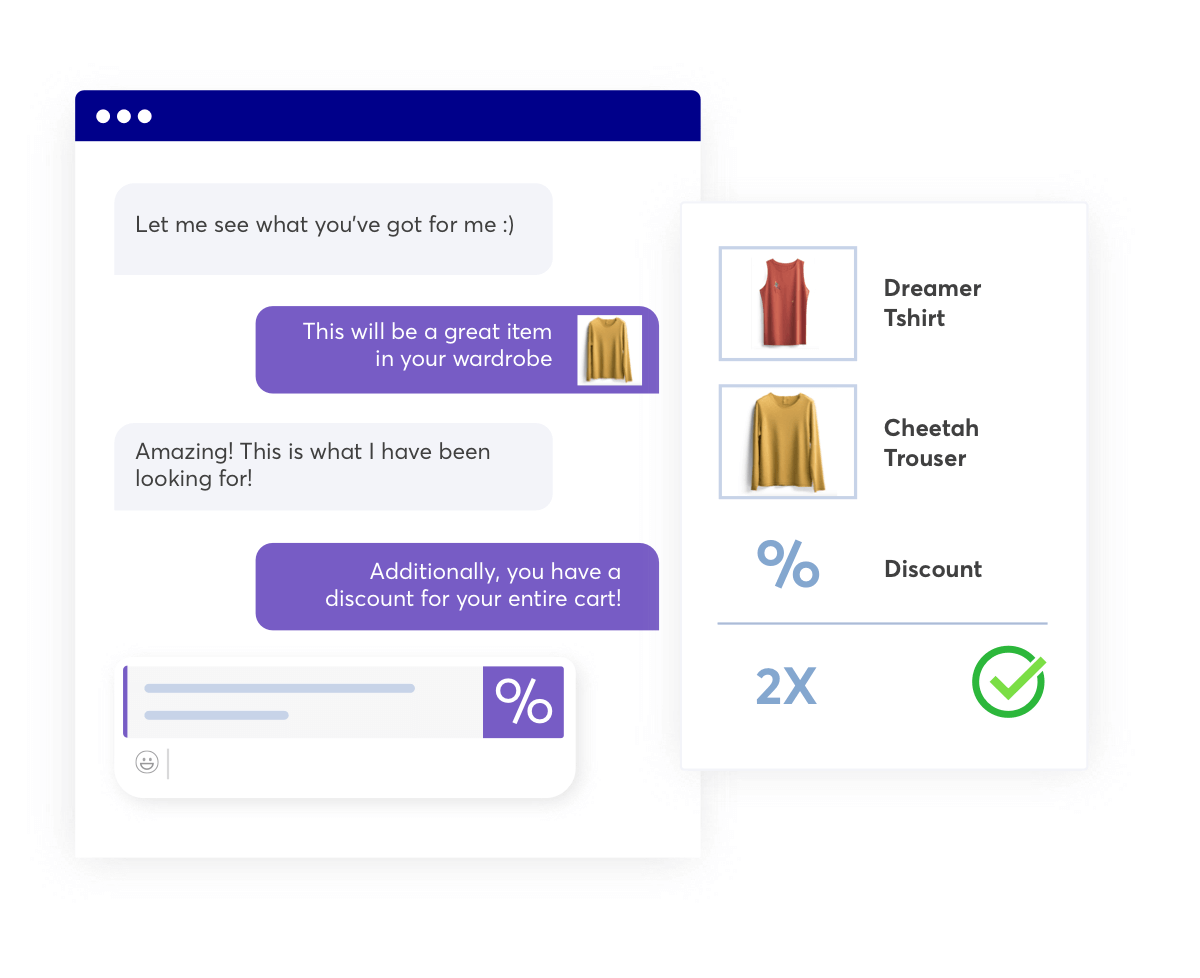
How Shopi Go achieved 22X higher conversation with personalized push notifications
Shopi Go, a leading fashion and lifestyle brand, faced challenges with mobile conversions. To address this, they partnered with Shopney to develop a mobile app.
By leveraging personalized push notifications, Shopi Go segmented its audience based on customer behavior and preferences. Shopi Go sent targeted messages about new arrivals, exclusive discounts, and limited-time offers, tailored to each customer's interests.
As a result, Shopi Go achieved 22X higher mobile conversion rates compared to their mobile website, along with a 13.5X higher customer engagement and a 1.2X increase in overall revenue.
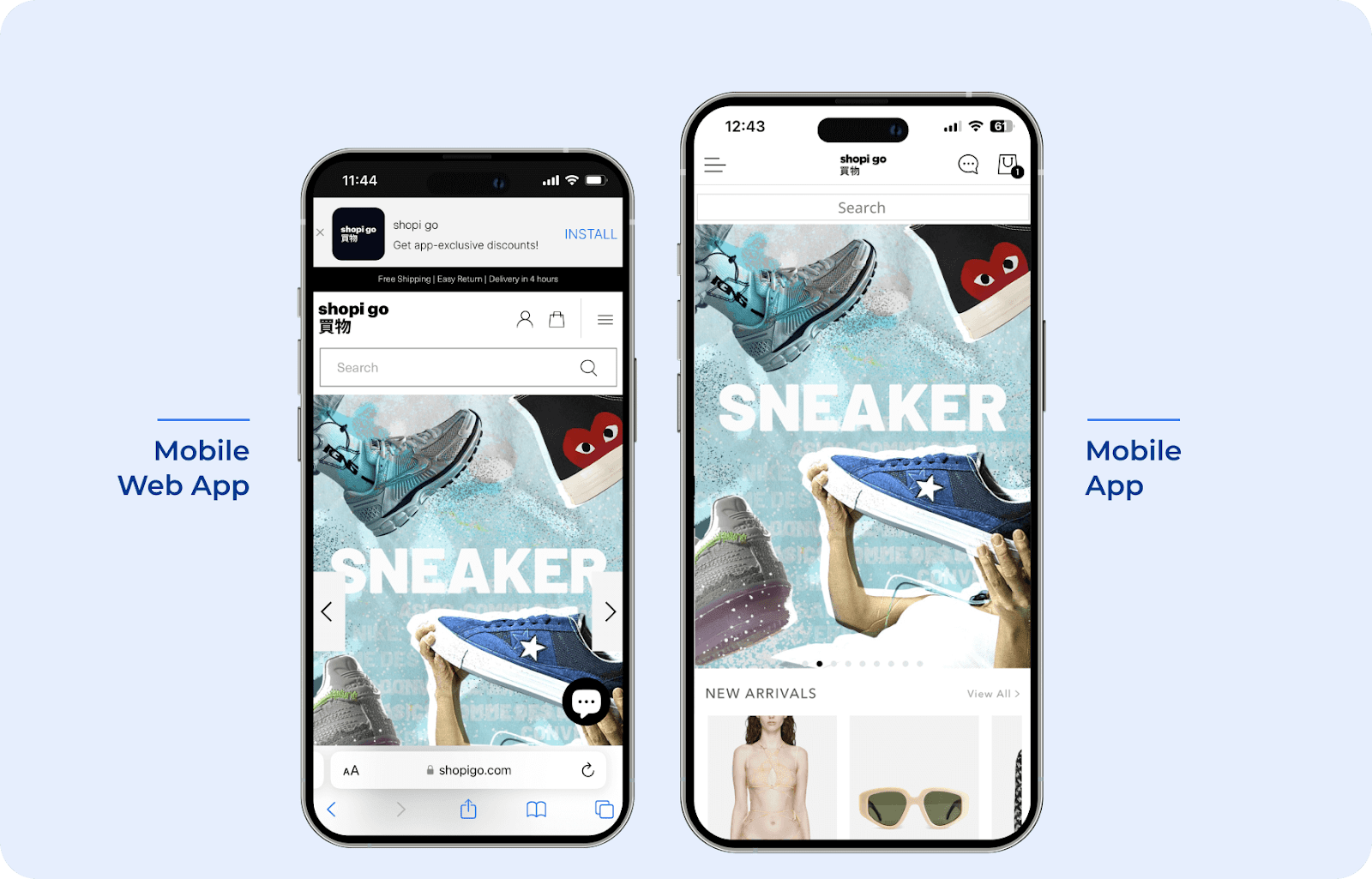
Join Shopney to increase conversions while decreasing marketing ad spend
Unlock the full potential of your Shopify store by transforming it into a powerful mobile app. Imagine increasing conversions and customer engagement by offering a seamless shopping experience right at your customers' fingertips. With a mobile app, browsing and purchasing become effortless, resulting in more sales.
Moreover, a mobile app enables you to execute more targeted and cost-effective marketing campaigns. Push notifications and personalized promotions allow you to connect deeply with your customers, encouraging repeat purchases and building lasting relationships.
Ready to elevate your eCommerce store? Get started with Shopney today.
FAQ?
What is the back-to-school season?
The back-to-school season is a crucial period when families prepare for the upcoming academic year by purchasing school supplies, clothing, and technology. It typically starts in late July and extends through early September, with the peak shopping period generally occurring in August.
Why is the back-to-school season important for Shopify stores?
The back-to-school season is the second-largest shopping period of the year, projected to grow 3.2% to reach $81.16 billion in the US in 2024. It presents a significant opportunity for Shopify stores to boost sales, engage customers, and build loyalty.
How much do people spend on back-to-school shopping?
Spending on back-to-school shopping varies based on factors like location, grade level, and personal preferences. On average, families in the US spend around $770 for elementary and high school students and about $1,000 for college students.
What are some effective strategies for maximizing sales during the back-to-school season?
Effective strategies include leveraging personalized campaigns, creating exclusive back-to-school deals, highlighting engaging content, collecting customer feedback and reviews, using a user-friendly mobile app, and optimizing the checkout process. Implementing loyalty programs and using social media effectively is also key.
What challenges do Shopify stores face during the back-to-school season?
Key challenges include increased competition and crowded marketplaces, managing inventory and ensuring timely delivery, and meeting the expectations of tech-savvy shoppers. Crafting unique selling propositions and innovative marketing strategies is crucial to stand out.
How can mobile apps benefit Shopify stores during the back-to-school season?
Mobile apps provide a seamless and intuitive shopping journey, facilitate faster and more secure transactions, and offer personalized experiences through push notifications and targeted promotions. They also enhance customer support through in-app chat features and integrate loyalty programs to encourage repeat purchases and build customer loyalty.


